- Description
- Useful properties
- How to grow a loquat on your own?
- Usage rules
The loquat grows on the territory of South-East Asia and is quite widespread in the kitchen of Azerbaijan and Georgia. But in our country this product is known little. In Russia, it began to import only recently, so not everyone has had time to try this fruit and feel its useful properties. And, as it turned out, there are a lot of them.
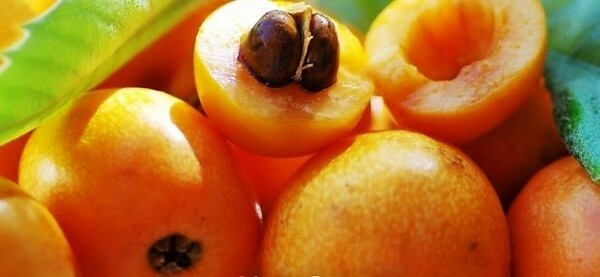
Description
Medlar is a fruit that is a close "relative" of a pear, hawthorn and quince. Today it is a kind of exotic, although earlier - about a hundred years ago, for Europeans this product was quite familiar. Various desserts, jams, jams were prepared from it, and, of course, they were used fresh.
There are basically two main types of medlar. Let's consider their description in more detail.
Medlar German
German loaf( caucasian) is a small tree whose height is no more than 4 meters. Its fetus is round in shape and brown in color. The flesh is quite tart with a sweet and sour taste.
Note! The most delicious and usable are the fruits collected after the first frosts! If the weather conditions are not favorable, the medlar is removed from the branches and placed in a strong saline solution. After a few weeks the fruit pulp acquires a softer structure and a pleasant taste.
On the next photo you can see what this type of medlar looks like.
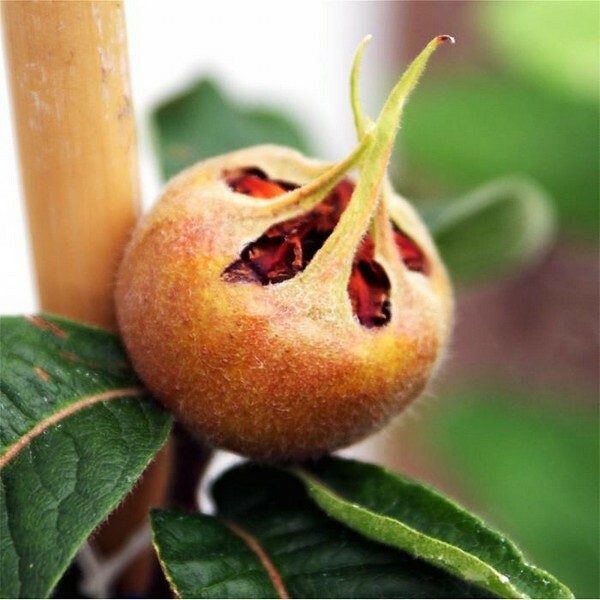
Why does this kind of medlar have two different names - German and Caucasian? This is due to the fact that initially this variety was bred in the south-west of Europe and south-east Asia. Later, the ancient Romans brought him to Germany, where he would receive the widest distribution.
Medlar Germanic prefers a mild climate. It grows well and fructifies there, where the summer is warm, and the winter is quite calm. In the wild, this plant is found on the territory of Georgia, South Ossetia, Armenia, as well as on the southern coast of the Crimean peninsula and in the North Caucasus. Cultivate this fruit in the central regions of Ukraine, although such plantings are rare.
Medlar Japanese
Japanese loquat is a taller tree, which can reach a height of 7 meters. He has a thick, wide crown, which is covered with white fragrant flowers during the flowering period. Fruits of this variety can have both round and oblong shape with a diameter of 30 to 50 mm.
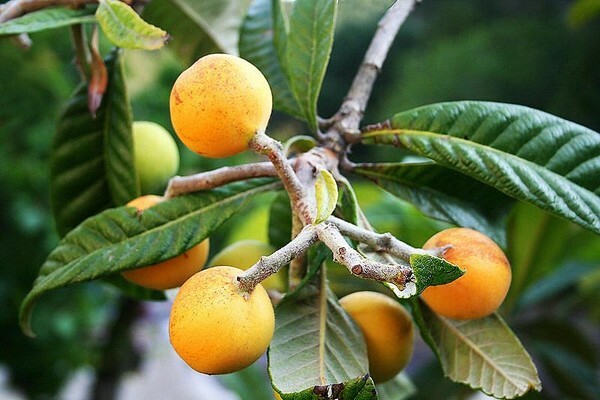
The flesh of the Japanese medlar is very juicy with sweet and sour taste. Inside, several small brown seeds can be found. Remove the branches from the branches can be already in late spring - early summer. This circumstance distinguishes this variety from the above-described - the German loquat is suitable for food only after the arrival of frost.
Japanese medlar badly tolerates transportation and is stored only a few days. For these reasons, on sale in our country these fruits are extremely rare.
Useful properties
The loquat is a unique fruit which, due to its rich composition, is able to display a lot of useful properties. And the main of them is aimed at strengthening immunity and increasing longevity.
Medlar is a natural remedy for the normalization of the digestive system, which is why it is recommended for use in various bowel diseases. In this case, unripe fruits have a fixing effect, thus eliminating diarrhea, while fully ripe pulp, on the contrary, works as an effective laxative.
Sweet and sour fruit contains a large number of phytoncides, which helps to eliminate inflammation in respiratory diseases. In order to ease the condition, you just need to stretch the flesh of the fruit and combine it with a small portion of honey.
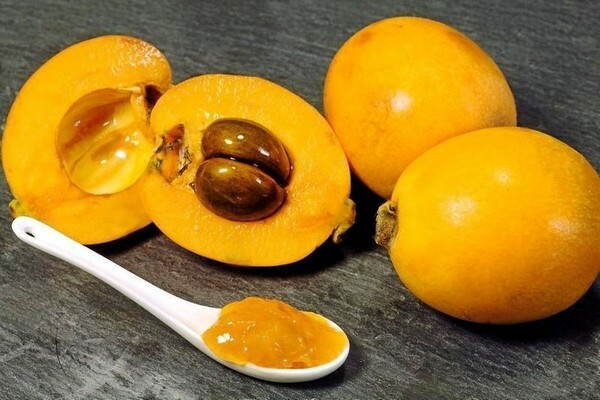
The loquat will become extremely useful with an elevated cholesterol level. It will reduce its concentration to a safe level and in parallel lead out other harmful compounds from the body, such as toxins, heavy metal salts and radionuclides.
Note! With long-term use of this product, the pectins contained in the pulp will normalize metabolic processes, help the liver normalize its work, which will certainly have a positive effect on overall health and skin condition.
Small round fruits are characterized by a high content of important vitamins - A and C, which makes their use extremely desirable in hypertension and heart diseases. Provitamin A, being a powerful antioxidant, will have a beneficial effect on the functions of the entire cardiovascular system, will normalize blood pressure and improve blood coagulability. Vitamin C stimulates the immune system, will lead the body to tone and prevent premature aging.
In general, the useful properties of such a fruit as a medlar will be useful in the following situations:
- prevention of oncology;
- prophylaxis of heart attacks;
- prophylaxis of strokes;
- diabetes;
- to increase the body's resistance to viruses and bacteria;
- kidney dysfunction;
- high level of toxins and other harmful components;
- vision impairment;
- worsening of digestive processes;
- various intestinal disturbances;
- fluctuations in blood pressure;
- colds;
- respiratory system diseases.
Plus, a rich vitamin-mineral composition makes the loquat very useful product for women during pregnancy and lactation. Biologically active substances will help strengthen the body of the future mother and help in the normal formation of the fetus.
Important! However, to misuse a medlar in this period is not worth it. It is better to start with small portions and follow the reaction - if rashes and other manifestations of allergies do not appear, the fruit may well be in your diet!
Sour-sweet loquat has found its place in the field of cosmetology. Her juicy flesh is actively used in home make-up. Thanks to such tools you can eliminate fine wrinkles, make the skin smoother and smoother, smooth out its hue and eliminate pigmentation.
How to grow a loquat on your own?
You can also do at home with growing medlars. This plant is rather unpretentious and at the same time has the ability to partially self-pollen, due to which the ovaries of the fruit will necessarily appear on the branches in one or another quantity.
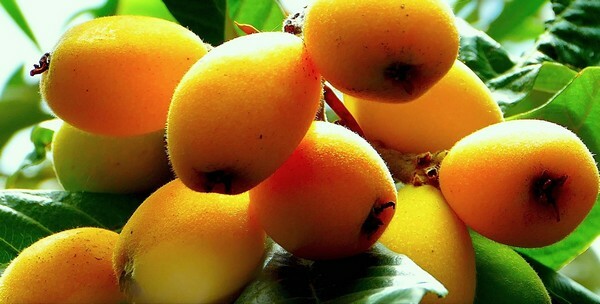
Advice! For self-cultivation is more suitable Japanese loquat, cultivation of medlar germanskoy - too troublesome business!
Planting
Grow a loquat from a fresh bone, peeled from the pulp. Since the planting material is covered with a very dense shell, it is desirable to pre-treat it with sandpaper for better germination. After the scarification, the seeds are placed in room temperature water for a day. Surfaced bones are thrown out, and the remaining on the bottom are left for planting.
It is recommended to plant seeds in separate pots. If you put several plants in one container at once, then later you will have to make a pick, which is quite painful for young shoots. In addition, the pot must have drainage holes that will ensure the outflow of excess moisture.
Any ready-made peat mixture can be used as a substrate. It is moistened and the seed is dipped to a depth of about 2 cm. After the pot, it is necessary to cover with glass or a plastic bag.
Care
For 20-30 days after planting, the substrate needs to be ventilated and removed from the inside walls of the minipark every day. This will prevent the reproduction of mold. In addition, every day the top layer of soil should be sprayed from the spray gun.
With proper care after 20-30 days after planting, young shoots should appear. When the shoots are reached in height of 2 cm, the greenhouse is removed, and the pots are transferred to a shaded place. Otherwise, in direct sunlight, the tender green may die. During the first week it is important to observe a certain temperature regime - the thermometer should be at +18 ° C.Once the seedlings are strong, they are carried to a balcony or terrace, where there will be enough fresh air for further growth of the medlar. Watering is carried out at least three times a week.
During the first month the plants develop rather quickly and reach 15 cm in height. If you plant several seeds in one pot, then now is the time to dive them into separate containers. If initially the pots were individual, then the transplant will be needed only in a year. Adult plants are transplanted even less often - approximately once every 3 years.
Note! The transplantation of the medlar passes very badly and during this period often ceases to bear fruit!
The first flowering is about the third year of life. This happens usually at the end of autumn or early winter.
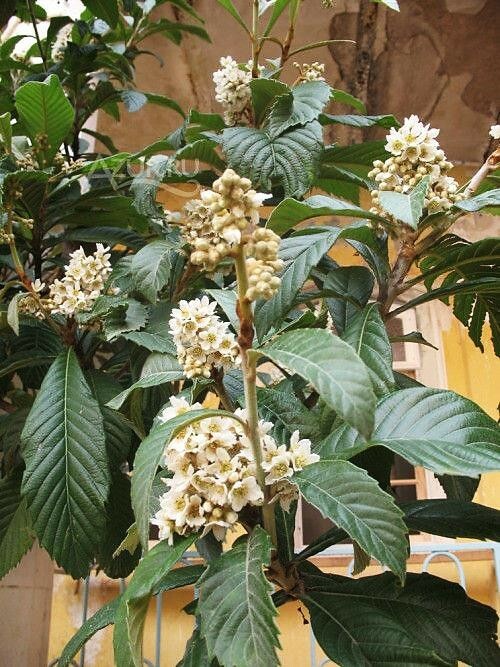
Approximately in the middle of December, in place of flowers begin to tie fruit. The first fruits are small - no more than 9 cm in diameter. Full fruit can be expected only for 4-5 years.
Adult plants are recommended to be fed twice a year, adding organic fertilizers to the substrate in spring and autumn. As for watering, it is regulated depending on the season - in the summer often, in the winter a couple of times a week. In this case, it is desirable to cover the soil with moss in the cold, which will prevent evaporation of moisture.
Pruning
A loquat growing in a wild environment is a leafy plant with a rounded crown. At the same time, it is quite high, sometimes up to 7-8 m. A culture grown at home can rarely even reach 2 meters in height.
Crown formation should be started at the initial stages of plant development - during the phase of the 3rd leaf formation. At this stage it is recommended to pinch the sprout. If you want to get a tree, then after six months, pinch the side shoots.
In addition, throughout the period of growth and development from the plant, it is necessary to regularly remove old branches and shoots that grow incorrectly. Thanks to this technique, the loquat will bear much better, and the quality of the crop will start to increase markedly.
In general, this plant pruning transfers fairly easily and painlessly, which allows using it as a bonsai. And if several plants are planted in a long pot at a time, then after a while, with proper care, you can get a rather unusual plant composition, consisting of interlaced sprouts. However, if the loquat is cultivated as a fruit plant, then in this case the traditional form of a small tree with a rounded crown is preferable.
At home, such cultivar varieties as:
- "Seiles" feel the best way;
- "Morozko";
- "Premier";
- Tanaka;
- "Champagne".
These fruit cultures have excellent taste qualities and in comparison with other varieties, they are better kept and normally transported.
Usage rules
The loquat is eaten like any other fruit - fresh. Using it in this way you can get the maximum amount of vitamins and other biologically active substances. Also from these fruits you can make jams, jams, compotes, use them as a filling for pies and other pastries.
A ripe quality loquat is a medium-sized fruit, roughly like a plum. Smaller fruits can turn out to be too acidic, and large ones - overpopulated and tasteless. The fruit is stored for no more than three days, in future it is better to transfer it to the refrigerator. Before using with a medlar, it is desirable to remove the skin. Have a nice appetite and stay healthy!
